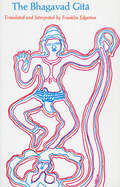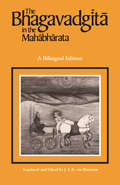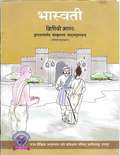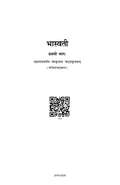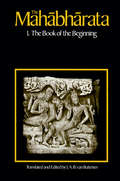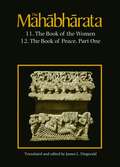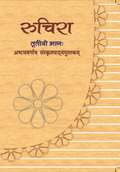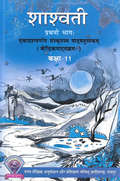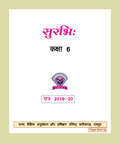- Table View
- List View
The Bhagavad Gita: India's Favorite Bible (A Harvard paperback, #34)
by Franklin EdgertonTo most good Vishnuites, and to most Hindus, the Bhagavad Gita is what the New Testament is to good Christians. It is their chief devotional book, and has been for centuries the principal source of religious inspiration for many millions of Indians. In this two-volume edition, Volume I contains on facing pages a transliteration of original Sanskrit and the Franklin Edgerton’s close translation. Volume II is Mr. Edgerton’s interpretation in which he makes clear the historical setting of the poem and analyzes its influence on later literature and its place in Indian philosophy. Sir Edwin Arnold’s beautiful translation, “The Song Celestial,” is also included in the second volume.
The Bhagavadgita in the Mahabharata (Mahabharata (chup) Ser.)
by J. A. B. Van BuitenenNo other Sanskrit work approaches the Bhagavadgita in the influence it has exerted in the West. Philosophers such as Emerson and the other New England Transcendentalists were deeply affected by its insights, a dozen or more scholars, including Annie Besant and Mahatma Gandhi, have attempted its translation, and thousands of individuals struggling with the problems divided loyalties have found comfort and wisdom in its pages. The Bhagavadgita ("Song of the Lord") tells of the young and virtuous Prince Arjuna who is driven to lead his forces into battle against an opposing army composed of close relatives and others whom he loves. The Lord Krsna, appearing in the poem as Arjuna's friend and charioteer, persuades him that he must do battle, and we see Arjuna changing from revulsion at the thought of killing members of his family to resignation and awareness of duty, to manly acceptance of his role as warrior and defender of his kingdom. The Bhagavadgita is a self-contained episode in the Mahabharata, a vast collection of epics, legends, romances, theology, and metaphysical doctrine that reflects the history and culture of the whole of Hindu civilization. The present edition forms a part of J. A. B. van Buitenen's widely acclaimed translation of this great work. Here English and Sanskrit are printed on facing pages, enabling those with some knowledge of Sanskrit to appreciate van Buitenen's accurate rendering of the intimate, familial tone and directness of the original poem.
The Bhagavadgita in the Mahabharata
by J. A. B. van BuitenenNo other Sanskrit work approaches the Bhagavadgita in the influence it has exerted in the West. Philosophers such as Emerson and the other New England Transcendentalists were deeply affected by its insights, a dozen or more scholars, including Annie Besant and Mahatma Gandhi, have attempted its translation, and thousands of individuals struggling with the problems divided loyalties have found comfort and wisdom in its pages. The Bhagavadgita ("Song of the Lord") tells of the young and virtuous Prince Arjuna who is driven to lead his forces into battle against an opposing army composed of close relatives and others whom he loves. The Lord Krsna, appearing in the poem as Arjuna's friend and charioteer, persuades him that he must do battle, and we see Arjuna changing from revulsion at the thought of killing members of his family to resignation and awareness of duty, to manly acceptance of his role as warrior and defender of his kingdom. The Bhagavadgita is a self-contained episode in the Mahabharata, a vast collection of epics, legends, romances, theology, and metaphysical doctrine that reflects the history and culture of the whole of Hindu civilization. The present edition forms a part of J. A. B. van Buitenen's widely acclaimed translation of this great work. Here English and Sanskrit are printed on facing pages, enabling those with some knowledge of Sanskrit to appreciate van Buitenen's accurate rendering of the intimate, familial tone and directness of the original poem.
The Bhagavadgita in the Mahabharata
by J. A. B. van BuitenenNo other Sanskrit work approaches the Bhagavadgita in the influence it has exerted in the West. Philosophers such as Emerson and the other New England Transcendentalists were deeply affected by its insights, a dozen or more scholars, including Annie Besant and Mahatma Gandhi, have attempted its translation, and thousands of individuals struggling with the problems divided loyalties have found comfort and wisdom in its pages. The Bhagavadgita ("Song of the Lord") tells of the young and virtuous Prince Arjuna who is driven to lead his forces into battle against an opposing army composed of close relatives and others whom he loves. The Lord Krsna, appearing in the poem as Arjuna's friend and charioteer, persuades him that he must do battle, and we see Arjuna changing from revulsion at the thought of killing members of his family to resignation and awareness of duty, to manly acceptance of his role as warrior and defender of his kingdom. The Bhagavadgita is a self-contained episode in the Mahabharata, a vast collection of epics, legends, romances, theology, and metaphysical doctrine that reflects the history and culture of the whole of Hindu civilization. The present edition forms a part of J. A. B. van Buitenen's widely acclaimed translation of this great work. Here English and Sanskrit are printed on facing pages, enabling those with some knowledge of Sanskrit to appreciate van Buitenen's accurate rendering of the intimate, familial tone and directness of the original poem.
The Bhagavadgita in the Mahabharata
by J. A. B. van BuitenenNo other Sanskrit work approaches the Bhagavadgita in the influence it has exerted in the West. Philosophers such as Emerson and the other New England Transcendentalists were deeply affected by its insights, a dozen or more scholars, including Annie Besant and Mahatma Gandhi, have attempted its translation, and thousands of individuals struggling with the problems divided loyalties have found comfort and wisdom in its pages. The Bhagavadgita ("Song of the Lord") tells of the young and virtuous Prince Arjuna who is driven to lead his forces into battle against an opposing army composed of close relatives and others whom he loves. The Lord Krsna, appearing in the poem as Arjuna's friend and charioteer, persuades him that he must do battle, and we see Arjuna changing from revulsion at the thought of killing members of his family to resignation and awareness of duty, to manly acceptance of his role as warrior and defender of his kingdom. The Bhagavadgita is a self-contained episode in the Mahabharata, a vast collection of epics, legends, romances, theology, and metaphysical doctrine that reflects the history and culture of the whole of Hindu civilization. The present edition forms a part of J. A. B. van Buitenen's widely acclaimed translation of this great work. Here English and Sanskrit are printed on facing pages, enabling those with some knowledge of Sanskrit to appreciate van Buitenen's accurate rendering of the intimate, familial tone and directness of the original poem.
Bhaswati Dviteeyo Bhag class 12 - SCERT Raipur - Chhattisgarh Board: भास्वती द्वितीयो भाग 12 वीं कक्षा एस.सी.ई.आर.टी. रायपुर - छत्तीसगढ़ बोर्ड
by Rajya Shaikshik Anusandhan Aur Prashikshan Parishad Raipur C. G.भास्वती द्वितीयो भागः 12 वी का राज्य शैक्षिक अनुसंधान और प्रशिक्षण परिषद् छत्तीसगढ़ रायपुर ने पुस्तक संस्कृत भाषा में प्रकाशित किया गया है, इस पाठपुस्तक में वैदिक साहित्य के अनन्तर लौकिक साहित्य की परिगणना की गई है। इस पाठ्यक्रम में वाल्मीकि से लेकर वर्तमान काल तक संस्कृत साहित्य प्रवाह भाँति तथा महाकाव्य, गद्यकाव्य, चम्पूकाव्य एवं नाट्यसाहित्य का समावेश किया गया है।
Bhaswati Prathamo Bhag class 11 - SCERT Raipur - Chhattisgarh Board: भास्वती प्रथमो भाग 11 वीं कक्षा एस.सी.ई.आर.टी. रायपुर - छत्तीसगढ़ बोर्ड
by Rajya Shaikshik Anusandhan Aur Prashikshan Parishad Raipur C. G.'Bhaswati Bhag 1' is a textbook of Sanskrit for students of class 11 who have opted for humanities/arts stream. This textbook has been constructed according to CBSE Board (NCERT) syllabus norms.
Kavyashasatralok Bhag 2 class 12 - RBSE Board: काव्यशास्त्रालोक भाग 2 कक्षा 12वी - आरबीएसई बोर्ड
by Madhyamik Shiksha Board Rajasthan Ajmerकाव्यशास्त्रालोक भाग 2 कक्षा 12 वीं का पुस्तक संस्कृत भाषा में माध्यमिक शिक्षा बोर्ड राजस्थान, अजमेर ने प्रकाशित किया गया है । इस पाठ्यपुस्तक में विभिन्न अध्याय और उनके अभ्यास प्रश्न दिये गए है, हर अध्याय का विस्तार मे विविरण किया गया है ।
The Mahabharata, Volume 1: Book 1: The Book of the Beginning
by J. A. B. Van BuitenenThe Mahabharata, an ancient and vast Sanskrit poem, is a remarkable collection of epics, legends, romances, theology, and ethical and metaphysical doctrine. The core of this great work is the epic struggle between five heroic brothers, the Pandavas, and their one hundred contentious cousins for rule of the land. This is the first volume in what will ultimately become a multi volume edition encompassing all eighteen books.
The Mahabharata, Volume 1: Book 1: The Book of the Beginning
by J. A. B. Van BuitenenThe Mahabharata, an ancient and vast Sanskrit poem, is a remarkable collection of epics, legends, romances, theology, and ethical and metaphysical doctrine. The core of this great work is the epic struggle between five heroic brothers, the Pandavas, and their one hundred contentious cousins for rule of the land. This is the first volume in what will ultimately become a multi volume edition encompassing all eighteen books.
The Mahabharata, Volume 7: Book 11: The Book of the Women Book 12: The Book of Peace, Part 1 (Mahabharata (chup) Ser.)
by James L. FitzgeraldWhat is found in this epic may be elsewhere; What is not in this epic is nowhere else. —from The Mahabharata The second longest poem in world literature, The Mahabharata is an epic tale, replete with legends, romances, theology, and metaphysical doctrine written in Sanskrit. One of the foundational elements in Hindu culture, this great work consists of nearly 75,000 stanzas in eighteen books, and this volume marks the much anticipated resumption of its first complete modern English translation. With the first three volumes, the late J. A. B. van Buitenen had taken his translation up to the threshold of the great war that is central to the epic. Now James Fitzgerald resumes this work with translations of the books that chronicle the wars aftermath: The Book of Women and part one of The Book of Peace. These books constitute volume 7 of the projected ten-volume edition. Volumes 4, 5, 6, 8, 9, and 10 of the series will be published over the next several years. In his introductions to these books, Fitzgerald examines the rhetoric of The Mahabharatas representations of the wars aftermath. Indeed, the theme of The Book of Women is the grief of the women left by warriors slain in battle. The book details the keening of palace ladies as they see their dead husbands and sons, and it culminates in a mass cremation where the womens tears turn into soothing libations that help wash the deaths away. Fitzgerald shows that the portrayal of the womens grief is much more than a sympathetic portrait of the sufferings of war. The scenes of mourning in The Book of Women lead into a crisis of conscience that is central to The Book of Peace and, Fitzgerald argues, the entire Mahabharata. In this book, the man who has won power in the great war is torn between his own sense of guilt and remorse and the obligation to rule which ultimately he is persuaded to embrace. The Mahabharata is a powerful work that has inspired awe and wonder for centuries. With a penetrating glimpse into the trauma of war, this volume offers two of its most timely and unforgettable chapters.
The Mahabharata, Volume 7: Book 11: The Book of the Women Book 12: The Book of Peace, Part 1
What is found in this epic may be elsewhere; What is not in this epic is nowhere else. —from The Mahabharata The second longest poem in world literature, The Mahabharata is an epic tale, replete with legends, romances, theology, and metaphysical doctrine written in Sanskrit. One of the foundational elements in Hindu culture, this great work consists of nearly 75,000 stanzas in eighteen books, and this volume marks the much anticipated resumption of its first complete modern English translation. With the first three volumes, the late J. A. B. van Buitenen had taken his translation up to the threshold of the great war that is central to the epic. Now James Fitzgerald resumes this work with translations of the books that chronicle the wars aftermath: The Book of Women and part one of The Book of Peace. These books constitute volume 7 of the projected ten-volume edition. Volumes 4, 5, 6, 8, 9, and 10 of the series will be published over the next several years. In his introductions to these books, Fitzgerald examines the rhetoric of The Mahabharatas representations of the wars aftermath. Indeed, the theme of The Book of Women is the grief of the women left by warriors slain in battle. The book details the keening of palace ladies as they see their dead husbands and sons, and it culminates in a mass cremation where the womens tears turn into soothing libations that help wash the deaths away. Fitzgerald shows that the portrayal of the womens grief is much more than a sympathetic portrait of the sufferings of war. The scenes of mourning in The Book of Women lead into a crisis of conscience that is central to The Book of Peace and, Fitzgerald argues, the entire Mahabharata. In this book, the man who has won power in the great war is torn between his own sense of guilt and remorse and the obligation to rule which ultimately he is persuaded to embrace. The Mahabharata is a powerful work that has inspired awe and wonder for centuries. With a penetrating glimpse into the trauma of war, this volume offers two of its most timely and unforgettable chapters.
Prakrut Bhasha class 12 - RBSE Board: प्राकृत भाषा कक्षा 12वी - आरबीएसई बोर्ड
by Madhyamik Shiksha Board Rajasthan Ajmerप्राकृत भाषा एवं साहित्य इस पाठ्यपुस्तक मे लेखक ने प्राकृत भाषा का अर्थ समझाया है। जिसमे अशोक के चौदह शिलालेख के बारे मे बताया है। उनके अर्थ समझाने का प्रयास किया है। प्राकृत व्याकरण के प्रमुख नियम इस पाठ मे संज्ञा-सर्वनाम मुद्दो के आधार पर दिखाये है। प्राकृत साहित्य के इतिहास का परिचय इस पुस्तक मे लेखक ने दिया है।
Ruchira Bhag 3 Sanskrit class 8 - NCERT: रुचिरा तृतीयो भाग संस्कृतपाठ्यपुस्तकम् अष्टमवर्गाय 8th NCERT
by Rashtriy Shaikshik Anusandhan Aur Prashikshan Parishadतृतीयो भागः अष्टमवर्गाय संस्कृतपाठ्यपुस्तकम्, रुचिरा पुस्तक शृङ्खला अपने नाम के अनुसार रुचिवर्धक सामग्री से विद्यालय स्तर पर छात्र-छात्राओं में संस्कृत भाषा के प्रयोग में कुशलता तो देगी ही साथ ही संस्कृत भाषा तथा साहित्य के प्रति उनमें अपेक्षित अभिरुचि भी उत्पन्न करने में समर्थ होगी, ऐसा विश्वास है। इसी शृङ्खला का तृतीय पुष्प रुचिरा तृतीयो भागः संशोधित संस्करण 2017 छात्र-छात्राओं के लिए प्रस्तुत है। इसके निर्माण में इस बात का ध्यान रखा गया है कि कक्षा में शिक्षक और विद्यार्थियों की अन्तःक्रिया प्रश्नोत्तर माध्यम से संस्कृत में ही हो जिससे विद्यार्थी सरल संस्कृत वाक्यों को समझने, बोलने, पढ़ने और लिखने का कौशल विकसित कर सकें। रुचिरा के इस भाग में कुल 15 पाठ हैं जिनमें छह पद्यात्मक तथा तीन संवादात्मक या नाट्यरूप हैं। शेष पाठ कथात्मक या निबन्धात्मक हैं।
Sanskrit class 11 - GSTB: संस्कृत कक्षा 11
by Enjoy Nectar Mehul Shah Shailesh Ojha L V. Joshi Shri Rawal Pvt. Kamlesh Kumar VI. Precision Convener. Pvt. Mansukh K Moliaवेदामृतम् આ બધા વેદમંત્રોમાં રહેલું ભાવતત્ત્વ સમગ્ર માનવસમાજને આવરી લે છે. એમાં લિંગ, વય કે જાતિ દેશનો ભેદ ક્યાંય દષ્ટિગોચર થતો નથી. विना वृक्षं गृहं शून्यम् ભૃગુના આ તર્કો માનવીય શરીર અને તેમાં ચાલી રહેલી પ્રક્રિયાની વિશેષતઃ જ્ઞાનેન્દ્રિયોની આસપાસ ફરે છે. માણસ જેમ પોતાની જુદી જુદી ઇન્દ્રિયોથી જુદા જુદા પ્રકારનાં જ્ઞાન મેળવી લે છે અને તે જ્ઞાન મુજબ વર્તન કરે છે, તેમ વૃક્ષ પણ કરે છે. આ વાત કહીને ભૃગુએ વૃક્ષમાં ચૈતન્ય-જીવ હોવાની માન્યતાને પ્રસ્થાપિત કરી આપી છે. અહીં જે પદ્ય છે, તે બધાં અનુષ્ટુપ છંદમાં છે. वर्षावर्णनम् આ કાવ્યની ખૂબી એ છે કે તેમાં વર્ષા ઋતુનું વર્ણન અત્યંત સુંદર શબ્દોમાં થયું છે. અહીં ઉપમા અલંકારનો પ્રયોગ રમણીય છે. વળી, ઉપમાન તરીકે પસંદ કરેલા પદાર્થો ખૂબ જ આકર્ષક છે. જેમકે ત્રીજા પદ્યમાં રાત્રિના પ્રારંભે અંધારામાં ચમકતા આગિયાઓને પાખંડી લોકો સાથે અને નહિ દેખાતા ગ્રહોને વેદો સાથે સરખાવ્યા છે. કલિયુગમાં પાપનું સામ્રાજ્ય પ્રવર્તે છે. તેથી પાખંડીઓનો પ્રભાવ જોવા મળે છે, જ્યારે વેદો સાવ ભૂલાઈ જાય છે. છઠ્ઠા શ્લોકમાં ઘાસથી ઢંકાઈ ગયેલા માર્ગોને અભ્યાસના અભાવે વીસરાઈ ગયેલા વેદજ્ઞાન સાથે અને સાતમા શ્લોકમાં વાદળોના આગમનથી હરખાઈ ગયેલા મયૂરોને ગૃહસ્થ લોકો સાથે સરખાવવામાં આવ્યા છે. પાંચમા શ્લોકમાં નવવારિનિપેવયા અને હરિનિવયા શબ્દોના પ્રયોગમાં યમકની ચમકૃતિ છે. આ બધાં પદ્યો અનુષ્ટુપ છંદમાં છે.दशकं धर्मलक्षणम् . , भस्मावशेषं मदनं चकार , उपनिषद् रससुधा , नाटयमेतन्मया कृतम्, मोहमुदगर: ,काव्यमधुबिन्दव: , अनेकार्थसप्तकम्, पृथुचरितम् , किन्तोः कुटिलता , हनूमद्भीमसेनयोः संवादः,चतस्त्री विधा:,ननु वर्णितोडसि , रजुः भस्म भवत्विति ,शकुन्तलाप्रत्याख्यानम् , किं नाम व्यक्तित्वम्, होलिकोत्सवः,अग्य्राणां शतमुद्दिष्टम् . વગેરે પાઠો સરસ રીતે પ્રસ્તુત કરેલ છે
Sanskrit class 9 - GSTB: સંસ્કૃત ધોરણ ૯
by Shri Maharudra K. Sharma Kamlesh Chokshi. Mansukh Molia Mohini Dave Smitabhain Joshiઆ પાઠ્યપુસ્તકમાં સંસ્કૃતના ભાષાકીય, સાહિત્યિક તેમજસાંસ્કૃતિક વૈવિધ્યને લક્ષ્યમાં લીધેલું છે. જરૂર જણાય ત્યાં વિદ્યાર્થીઓની વયકક્ષાને અનુરૂપ કેટલાંક સંપાદન તેમજ સ્વતંત્ર પાઠની સંરચના કરવામાં આવી છે. સંસ્કૃત સંભાષણનાં પાસાંને આવરી લેવાયાં છે. સંસ્કૃત ભાષાનો સઘન પરિચય થાય તે માટે સઘળાં પદોની વિસ્તૃત સમજૂતી અપાઈ છે. સંસ્કૃત સાહિત્યનાં વિવિધ સ્વરૂપોને અહીં પ્રતિનિધિત્વ અપાયું છે. પ્રસ્તુત પાઠ્યપુસ્તક દ્વારા વિદ્યાર્થીઓમાં સર્જનાત્મકતા, વિચારશક્તિ અને તર્કશક્તિ વિકસે અને તે દ્વારા સર્વાગી વિકાસ થાય તેમજ અધ્યયન અધ્યાપન પ્રક્રિયામાં મદદરૂપથાય તે રીતે પાઠ્યપુસ્તક તૈયાર કરવામાં આવ્યું છે.
Sanskrit Semester 1 class 6 - GSTB: संस्कृत सेमेस्टर 1 कक्षा 6 - जीएसटीबी
by Narendra Raval Kanu Karkar Ruta Parmar Paresha Thakarઆ પુસ્તક ધોરણ 6 નું સંસ્કૃત (પ્રથમ સત્ર ) નું પાઠ્યપુસ્તક છે .
Sanskrit Semester 1 class 6 - GSTB: संस्कृत (प्रथम सत्र ) कक्षा ६
by Narendra Rawal Kanubhai Karkar Pravinchandra Jani Prafulbhai Scissorsપાઠ1 માં ચિત્ર દ્વારા સરસ માહિતી આપેલ છે જેમાં પશુઓ ના ચિત્રો દ્વારા સંસ્કૃત ભાષાની સમજ આપવામાં આવી છે. ચિત્રપદાની 1 થી 4 સરસ માહિતી સભર છે.પાઠ 2 ચિત્ર દ્વારા વાર્તા ની સરસ સમજ આપેલ છે. પાઠ 3 માં સંસ્કૃત ભાષા દેવનાગરી લિપિમાં લખાય છે. આપણી માતૃભાષાની લિપિ દેવનાગરી લિપિમાંથી જ આવી હોવાથી શિરોરેખાને બાદ કરતાં કેટલાક મૂળાક્ષરો દેવનાગરી લિપિની જેમ લખાય છે, જેથી તેનો પરિચય કેળવવો મુશ્કેલ નથી. કેટલાક મૂળાક્ષરોના વળાંકોમાં થોડીક ભિન્નતા જોવા મળે છે, તે સમજાવેલ છે,પાઠ 4 માં સંખ્યા જ્ઞાન આપેલ છે. આરીતે 9 પાઠ સરસ માહિતી સભર છે. પાઠ 9 માં ઘડિયાળ માં સમય જોવા અને સંસ્કૃત કહેવાનું સીખ્વાડવામાં આવ્યું છે. સાથે પુનરાવર્તન1 અને 2 પણ છે.
Sanskrit Semester 1 class 8 - GSTB: संस्कृत (प्रथम सत्र ) कक्षा ८
by Narendra Rawal Kanubhai Karkar Aita Parmar Troubled Thackerપ્રસ્તુત પાઠ્યપુસ્તક માં ચિત્રપદાની 1 અને 2 માં ચિત્રો ના મળ્યાં થી દુર અને નજીક ની વાત કહેતી વખતે સંસ્કૃત માં ક્યાં શબ્દો નો ઉપયોગ કરવો તે સમજવામાં આવેલ છે . आत्मश्रद्धायाः प्रभावः પાઠ માં એકલવ્ય ની વાર્તા સમજવામાં આવી છે. एहि सुधीर કવિતા जनार्दन हेगडे ની લેવામાં આવી છે. शीलायाः प्रवासः જેમાં પ્રવાસ વર્ણન કરેલ છે સાથે ગુફાઓ વિષે અને શીલાઓ વિષે માહિતી આપેલ છે. विनोदपद्यानि માં હાસ્ય વિનોદની ની વાતો છે. सङ्ख्या પાઠ માં ફળો વિષે માહિતી આપેલ છે. અને પુનરાવતન 1 અને 2 આપેલ છે.
Sanskrit Semester 2 class 6 - GSTB: संस्कृत (द्वितीय सत्र) कक्षा ६
by Narendra Rawal Kanubhai Karkar Pravinchandra Jani Prafulbhai Scissorsપ્રથમ અજમાયશ પછી ગુજરાત રાજયની તમામ શાળાઓ માટે તૈયાર થયેલા ધોરણ 6 નાં પાઠ્યપુસ્તકોને ક્ષતિરહિત બનાવવા પ્રયત્ન કર્યો છે, પ્રસ્તુત સંસ્કૃત દ્વિતીય સત્ર માં પહેલા શરીર ના અંગો ને સંસ્કૃત માં શું કહેવામાં આવે છે તે વિષે ચિત્ર દ્વારા સરસ માહિતી આપવામાં આવી છે અને બીજા પાઠ માં ડાબે ,જામણે, ઉપર, નીચે વગેરે ની માહિતી આપવામાં આવી છે. ત્યાર બાદ વાંચવું , બેસવું, રમવું, પૂજા કરવી વગેરે ક્રિયાઓ સમજવા માં આવી છે,ઉખાણા સ્વરૂપે વાક્યો પ્રસ્તુત કરવામાં આવ્યા છે. મારી શાળા વિષે માહિતી અને ત્યાર બાદ ભારત વિષે માહિતી આપવા માં આવી છે. અંત માં પુનરાવર્તન 1 અને 2 પણ આપેલ છે.
Sanskrit Vagmayadarsh Bhag 2 class 12 - RBSE Board: संस्कृतवाङ्मयादर्श भाग 2 कक्षा 12वी - आरबीएसई बोर्ड
by Madhyamik Shiksha Board Rajasthan Ajmerसंस्कृतवाङ्मयादर्शः भाग 2 कक्षा 12वी का यह पुस्तक माध्यमिक शिक्षा बोर्ड राजस्थान, अजमेर ने प्रकाशित किया है। इस पाठ्यपुस्तक में गद्यकाव्य, लोक-परिचय का ज्ञान, सरल वाक्यरचना और श्लोकरचना के बारे में बताया गया है।
Shashwati (Dviteeyo Bhag) class 12 - SCERT Raipur - Chhattisgarh Board: शाश्वती द्वितीयो भाग 12 वीं कक्षा - एस.सी.ई.आर.टी. रायपुर - छत्तीसगढ़ बोर्ड
by Rajya Shaikshik Anusandhan Aur Prashikshan Parishad Raipur C. G.शाश्वती द्वितीयो भागः कक्षा 12 वी का राज्य शैक्षिक अनुसंधान और प्रशिक्षण परिषद् छत्तीसगढ़ रायपुर ने पुस्तक संस्कृत भाषा में प्रकाशित किया गया है, इस पाठपुस्तक में सिखाने वाले के दृष्टीकोण से जब शिक्षा भारमुक्त होगी तो वह स्वयमेव एक 'आनन्दप्रद अनुभूति' सिद्ध होगी । इस पाठ्यक्रम में आनन्दवृद्धि के लिए ऐसे ज्ञान-सन्दर्भो का समावेश किया गया है, जिनमें उदात्त जीवन मूल्य है, जिनमें घटना-वैचित्र्य के साथ ही साथ आधुनिक जनजीवन का प्रतिबिम्ब भी है ।
Shashwati Prathamo Bhag class 11 - SCERT Raipur - Chhattisgarh Board: शाश्वती प्रथमो भाग 11 वीं कक्षा - एस.सी.ई.आर.टी. रायपुर - छत्तीसगढ़ बोर्ड
by Rajya Shaikshik Anusandhan Aur Prashikshan Parishad Raipur C. G.शाश्वती कक्षा 11 वी का राज्य शैक्षिक अनुसंधान और प्रशिक्षण परिषद् छत्तीसगढ़ रायपुर ने पुस्तक संस्कृत भाषा में प्रकाशित किया गया है, इस पाठपुस्तक में सिखाने वाले के दृष्टीकोण से जब शिक्षा भारमुक्त होगी तो वह स्वयमेव एक 'आनन्दप्रद अनुभूति' सिद्ध होगी । इस पाठ्यक्रम में आनन्दवृद्धि के लिए ऐसे ज्ञान-सन्दर्भो का समावेश किया गया है, जिनमें उदात्त जीवन मूल्य है, जिनमें घटना-वैचित्र्य के साथ ही साथ आधुनिक जनजीवन का प्रतिबिम्ब भी है ।
Shyamla Sanskrit class 10 - SCERT Raipur - Chhattisgarh Board: श्यामला संस्कृत 10 वीं कक्षा - एस.सी.ई.आर.टी. रायपुर - छत्तीसगढ़ बोर्ड
by Rajya Shaikshik Anusandhan Aur Prashikshan Parishad Raipur C. G.Shyamla Sanskrit text book for 10th standard from Rajya Shaikshik Anusandhan Aur Prashikshan Parishad, Raipur, C.G. in Sanskrit.
Surbhi (Sanskrit) class 6 - SCERT Raipur - Chhattisgarh Board: सुरभि (संस्कृत) 6 वीं कक्षा - एस.सी.ई.आर.टी. रायपुर - छत्तीसगढ़ बोर्ड
by Rajya Shaikshik Anusandhan Aur Prashikshan Parishad Raipur C. G.सुरभि पाठ्यपुस्तक कक्षा 6 वी का राज्य शैक्षिक अनुसंधान और प्रशिक्षण परिषद् छत्तीसगढ़ रायपुर ने संस्कृत भाषा में प्रकाशित किया गया है, इस पाठ्यपुस्तक में गद्य, पद्य, कथा, नाटक और संवाद को समामेलित किया गया है। कक्षा 6 सुरभि (संस्कृत) पाठ्य पुस्तक में अन्तर्निहित पाठ्य विषय छात्रों में राष्ट्र एवं संस्कृति के प्रति भावनात्मक एकता को बढायेंगे । कक्षा 6 संस्कृत में पठन-पाठन की व्यवस्था को दृष्टिगत रखते हुए वैज्ञानिक आविष्कार सङ्गणक, फ्रीज, रेडियो, वायुयान, चलितदूरभाष (मोबाइल), पर्यावरण गीत छत्तीसगढ के पर्व, वर्षागीतम्, बसन्तवर्णनम्, राष्ट्रीय पर्व, महापुरुषों की जीवनी, नीतिश्लोक, सूक्ति, आदि पाठों को समावेशित किया गया है।
